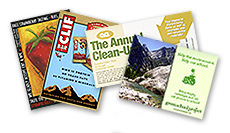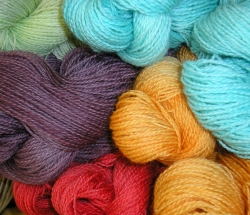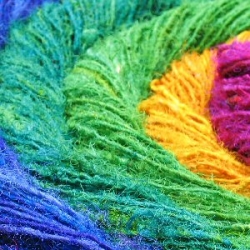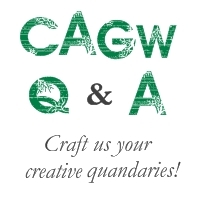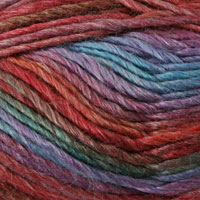
We love green craft supplies around here, and we talk about how to find green craft supplies quite a bit. What we don’t often dive into are the toxic chemicals you’re avoiding when you choose natural craft supplies. Here are seven common toxic chemicals that might be lurking in your crafty stash.
7 Toxic Chemicals in Craft Supplies
1. VOCs
Short for volatile organic compounds, these nasty chemicals are solvents used in making products like glues and paints. They evaporate as these products dry, contaminating your home’s air. Most of our homes already have very poor indoor air quality, so anything you can do to improve the air quality in your home is a good thing.
How to avoid them: Look for VOC free or low VOC on the label when you’re choosing anything that emits fumes like glues glazes, paint and primer.
2. Perfluorinated Compounds (PFCs)
This family of chemicals make products resist stains, and you will find them in products from nonstick pans and fast food wrappers to clothing and nail polish. They are a likely carcinogen that are also linked to liver, kidney, and reproductive problems.
How to avoid them: Anything nonstick is suspect, so skip the Teflon pan when you’re doing a stovetop craft. Also be wary of water-resistant fabrics, like the sort you’d use to make athletic clothing. That fabric likely contains PFCs.
3. Triclosan
Triclosan is an antibacterial that’s a huge public health concern. Triclosan’s ubiquity is basically a breeding program for superbacteria that’s resistant to antibiotics and antibacterals. It’s in everything from hand soap to deodorant to toothpaste.
How to avoid it: Whether you’re scrubbing your screens after printing or cleaning old glass jars for crafting, check those labels. Look for for triclosan, 2,4,4′-trichloro-2′-hydroxydiphenyl ether, 5-chloro-(2,4-dichlorophenoxy)phenol, trichloro-2′-hydroxydiphenyl ether, CH-3565, Lexol 300, and Irgasan DP 300.
4. Fragrance
The trick about “fragrance” on packaging is that it can really be anything. It could be totally harmless, or it could be a known carcinogen. It’s a sneaky way for companies to hide some ingredients under a blanket term for “proprietary reasons.” Soap and bath and body crafters, beware! Many of the scents that you can buy for your homemade soaps, body washes, and candles contain fragrance.
How to avoid it: Opt for essential oils to add scents to your products, and look out for “fragrance” and “parfum” when you’re buying scent blends.
5. 1,4 Dioxane
This toxic ingredient is a carcinogen used to make products foamier. Think things like soap. Right now, 1,4 dioxane doesn’t have to be labeled, so it’s very hard to avoid in conventional products. Like ethanolamine compounds, any cleaner that foams is suspect, so read those ingredients labels! Keep an eye out for this ingredient and its many names in homemade soap-making kits.
How to avoid it: Look for sodium laureth sulfate, sodium lauryl sulfate, PEG compounds, and chemicals that include “xynol,”, “ceteareth,” and “oleth” in the name.
6. Butylated Compounds
Like parabens, these are preservatives used in cosmetics, but food companies also use butylated compounds to prolong shelf life. They are endocrine disruptors linked to organ damage. In fact, the EU has banned butylated compounds in cosmetics. This is another one to look out for in soap-making kits.
How to avoid them: Look for BHA, BHT on the label.
Avoiding Toxic Chemicals in the Craft Room
So, how do we avoid these harmful chemicals? You have a few options!
1. Careful label-reading. The front of the package tells you very little about what’s in a product. Flip that puppy over and read the ingredients! Labels like “natural” should be red flags, not comforting phrases.
2. Use the Skin Deep Database. If you’re not familiar with the Environmental Working Group’s Skin Deep Database, it’s a great resource for finding safer cosmetics. It’s also great for searching individual ingredients, though, which makes it the green crafter’s secret weapon!
3. Look for certifications. Natural has zero meaning on a product label, but non-toxic, certified organic, and zero VOC are regulated terms. That means marketers can’t exploit them as easily to mislead us about a product’s safety.
A version of this article originally ran at Feelgood Style. Kitchen photo via Shutterstock.

